But it’s the care, thought and time ARRI have put into this new camera that stood out to us in the (brief) time we had with it. ARRI designed the new camera with a singular focus on the best possible image quality they could achieve and an equally singular purpose to create a worthy successor to the original ALEXA family. There’s a lot to cover – both today and in the near future – so let’s dive in and take a look.
Body & Build
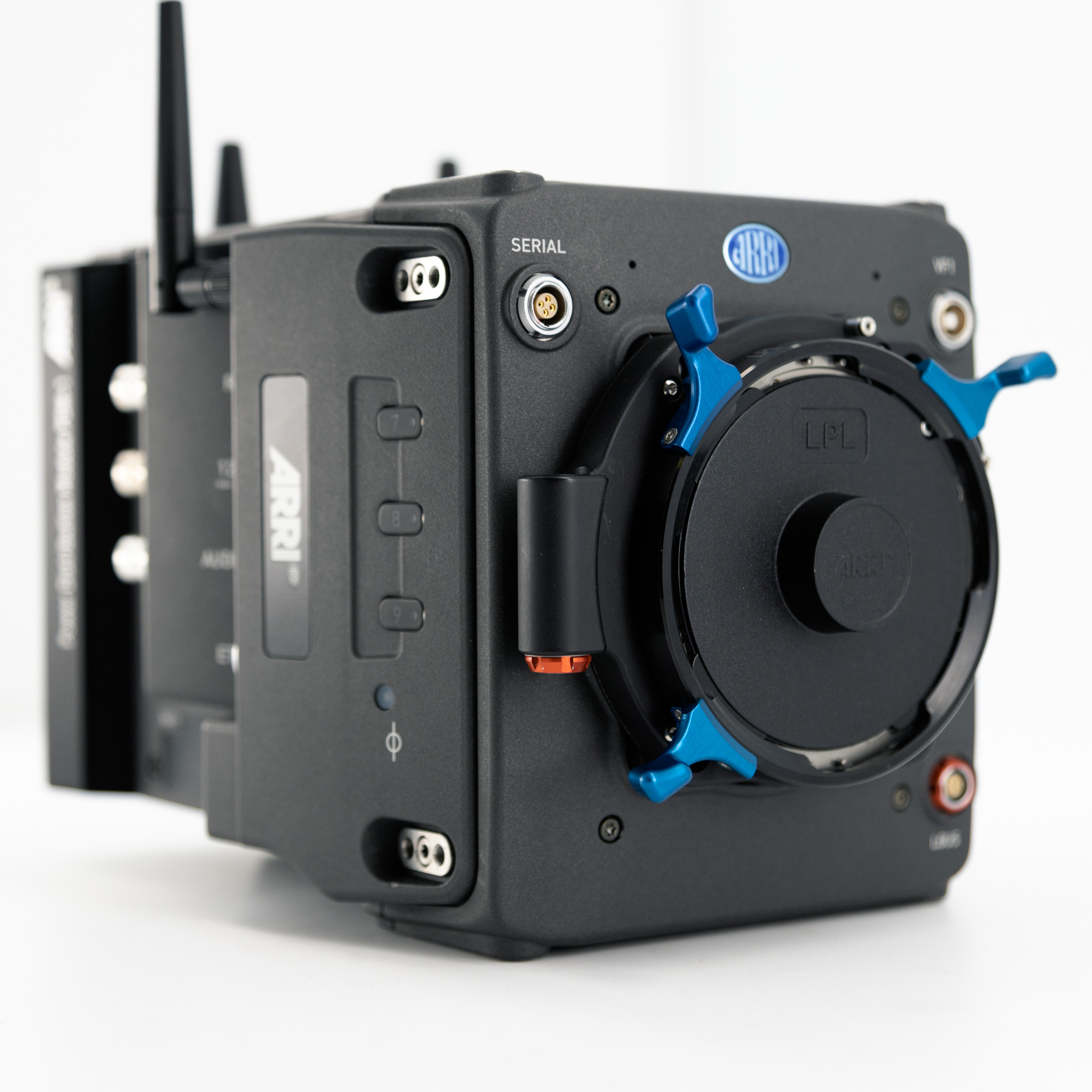
ALEXA 35 is a small form-factor body similar in volume to the ALEXA MINI and/ ALEXA MINI LF (though larger than both) and weighing in at 6.4 lbs. for the body only. ARRI is calling the new camera the smallest fully-featured ALEXA, where a “full-size” version is no longer necessary. The sensor is mounted vertically centered and sits behind a motorized full-spectrum neutral density (FSND) filter wheel offering ND values of 0.6, 1.2 and 1.8 (2, 4 and 6 stops). Dual “scratch” mics are available as well as a front-mounted viewfinder port (with another on the camera’s rear), plus LBUS and Serial connections. The Serial connection directly enables ARRI L-CUBE-like functionality to support focus distance tools like ARRI’s UDM-1 as well as models from FocusBug.
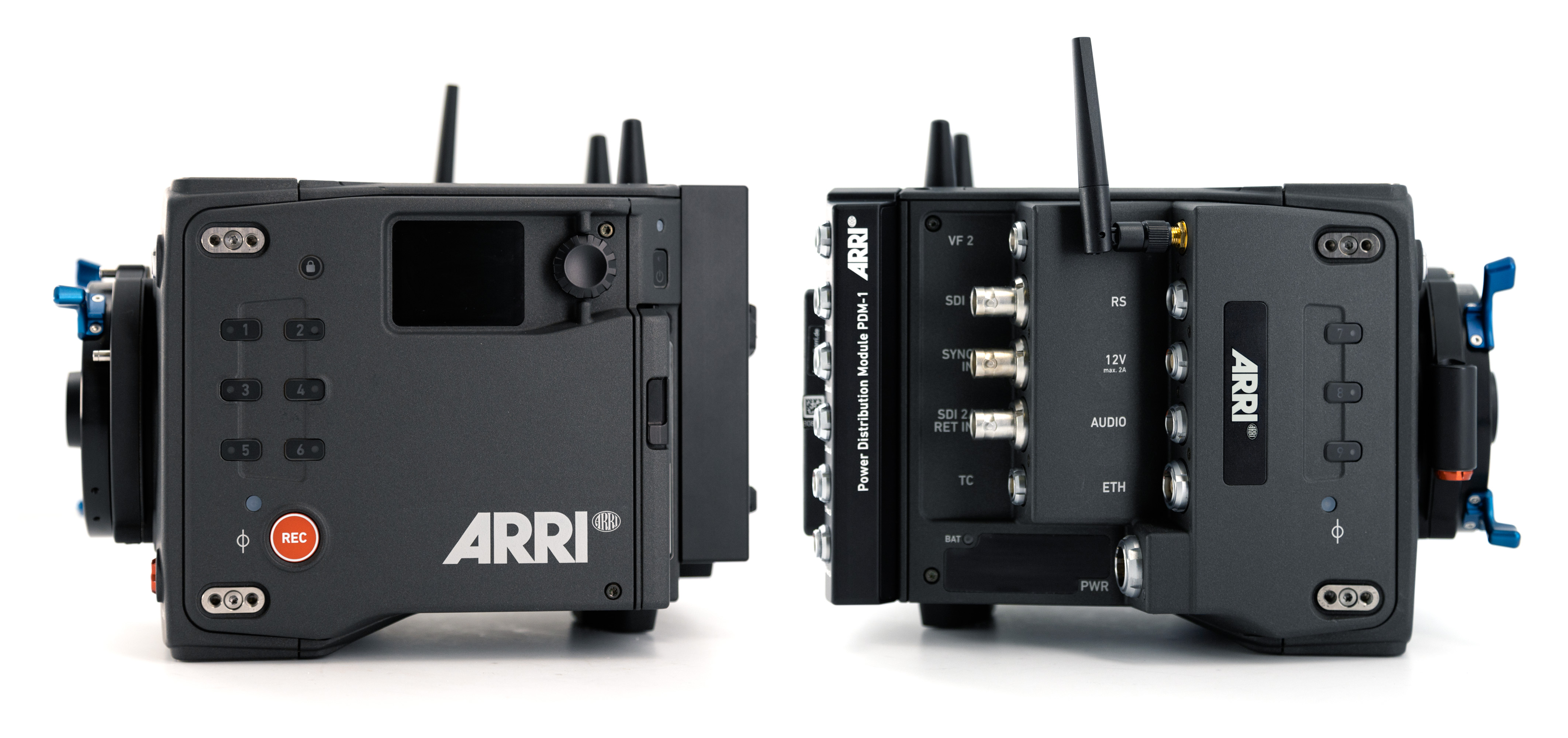
The camera’s left side features a familiar array of user buttons, record button, bracket mounting points and a small side display and rotary button wheel for checking and setting frame rate, shutter angle, ISO, the ND filter level and white balance among other features. This is sure to be a boon for operators and environments where using the viewfinder (ALEXA 35 uses the existing MVF-2 viewfinder that debuted with the ALEXA MINI LF) is impractical, such as on ARRI’s Trinity stabilization system or Steadicam, drones, gimbals, jib arms, etc. The camera’s power button and Codex Compact media bay complete the left side features. New double-capacity high-speed 2TB Codex Compact drives are available for the camera in addition to existing 1TB versions.
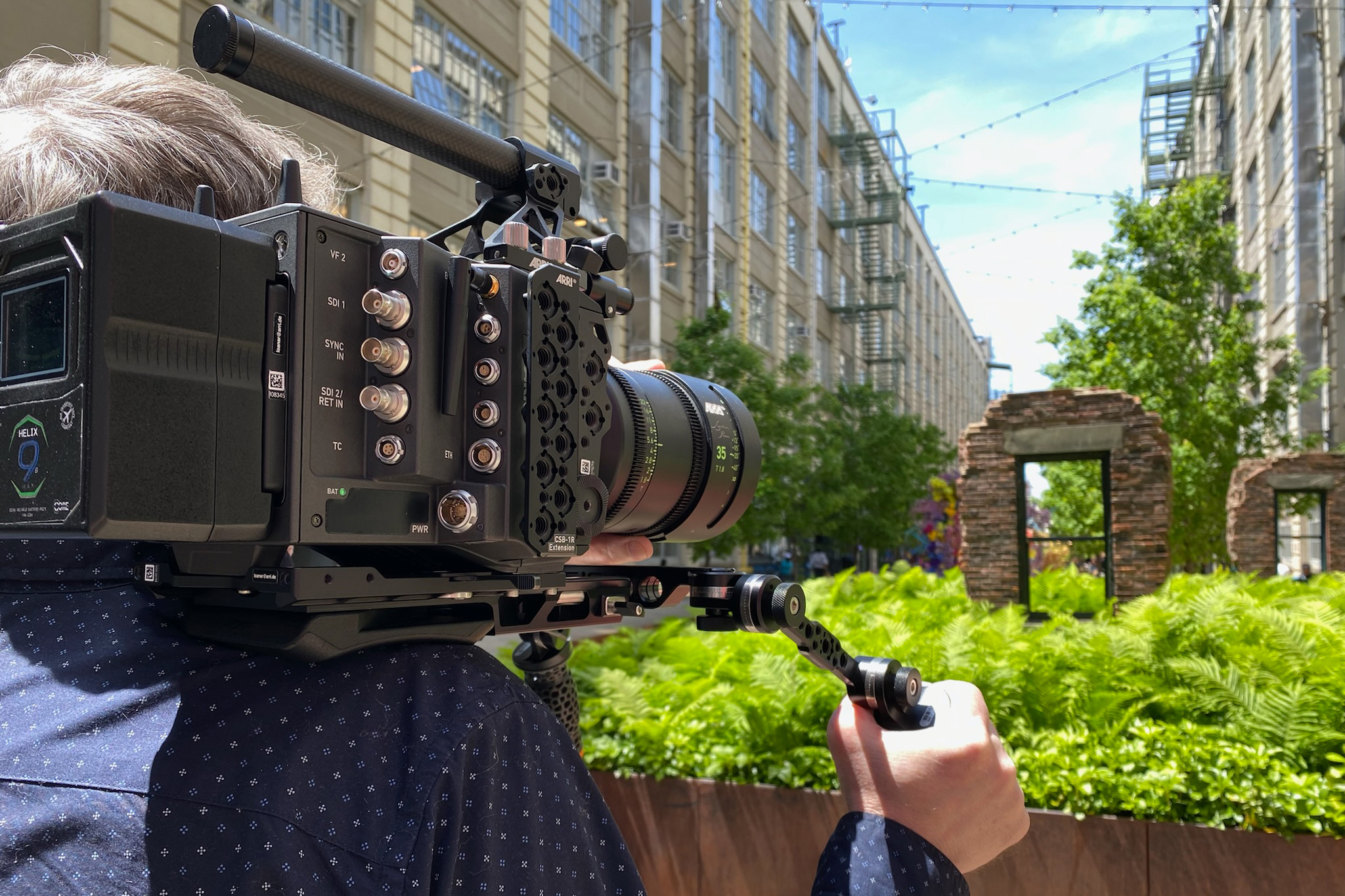
On the camera’s right side, we see an additional set of mounting points, additional user buttons, the ECS system’s RF antenna terminal, a 24V 3-pin Fischer power output with run-stop (4A), 2-pin 12V output (2A), 6-pin audio connector (similar to the one on the ALEXA MINI LF and using the same cables), a Lemo ethernet output and the camera’s (24V – more on that below) power input. Further back are the additional viewfinder port, dual independent SDI outputs supporting up to a 12G signal (SDI 2 is also capable of receiving a return or input signal up to 3G) a Sync port, for genlock, and a timecode input/output port. Each SDI output can be “LUTted” for particular display types to facilitate reviewing, for example, HDR and SDR simultaneously on set.
We noted the absence of ARRI’s usual ‘EXT’ port and were told that LBUS (available on the front of the camera and a number of lens mounts) is now the standard/unified peripheral device connection interface for the camera (an LBUS-to-EXT cable will be available for legacy devices). Also of note, the ethernet port can output the camera’s full metadata stream with a delay of only a few milliseconds and, like the UMC-4 when used with the ALEXA MINI LF, can feed directly to ARRI’s Live Link metadata plug-in for Unreal Engine when used in Virtual Production scenarios.
New 4K ALEV 4 Sensor
At the center of the new camera is a completely new 4K Super 35-format sensor, in ARRI’s familiar 3:2 aspect ratio, featuring 4.6K horizontal resolution (4608 x 3164 resolution in Open Gate). Compared to the ALEV III sensor used in many previous ARRI cameras, the dimensions of the new sensor, dubbed ALEV 4, are similar at 27.99mm x 19.22mm in Open Gate mode with a diagonal of 33.96mm (versus 28.25mm x 18.17mm and a 33.59mm diagonal for the older sensor). ALEXA 35’s 4K 16:9 sensor mode follows ARRI’s tradition of utilizing a 16:9 container combined with DCI resolution horizontally (such as the venerable 2048 x 1152 format on earlier ALEXAs). On ALEXA 35 this ‘workhorse’ frame is 4096 x 2304 pixels.
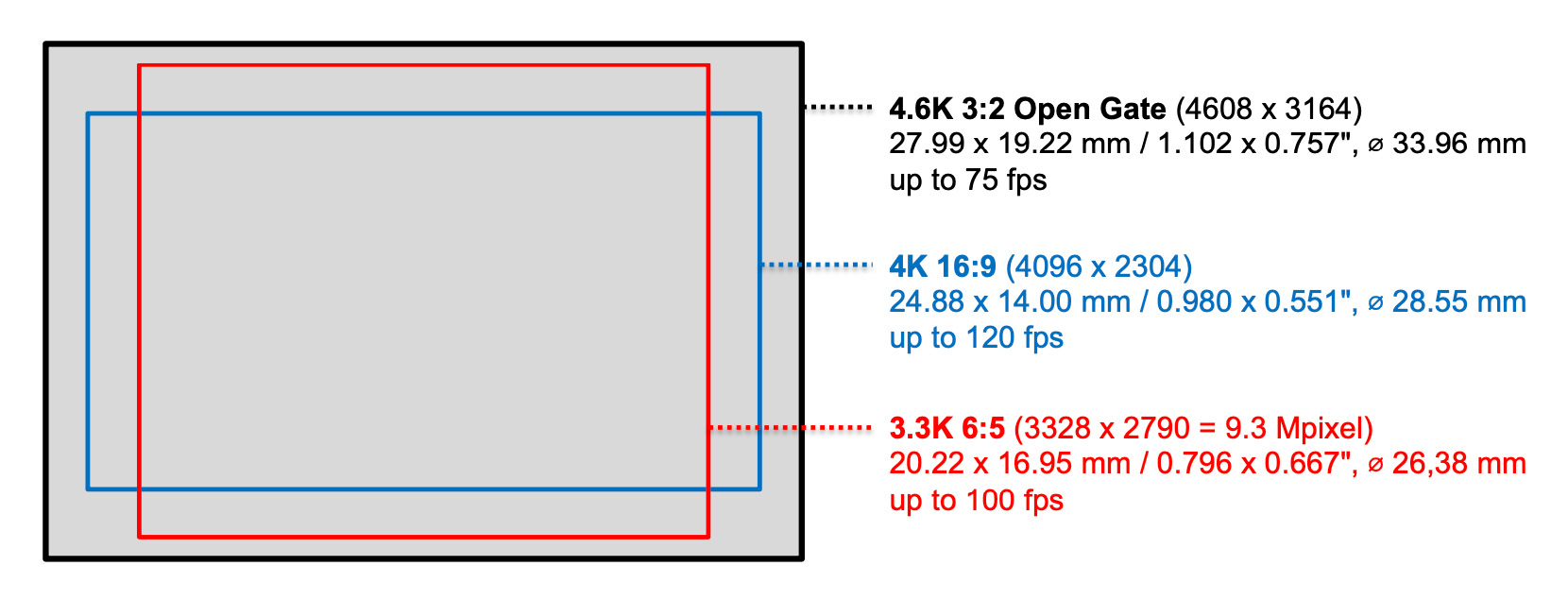
Many other sensor/recording modes are available as well, including a dedicated 2:1 mode (4096 x 2048), popular with streaming services such as Netflix, as well as modes tailored to shooting with anamorphic lenses. The maximum frame rate is 120 fps in both ARRIRAW and ProRes, depending on the mode chosen. New higher capacity, and higher speed, 2TB Codex Compact media is required to hit the top end frame rate in some modes, but existing 1TB drives remain fully compatible following a firmware update (performed when first inserting the drive into an ALEXA 35). See the chart below for a full breakdown of available recording modes, resolutions and frame rates:
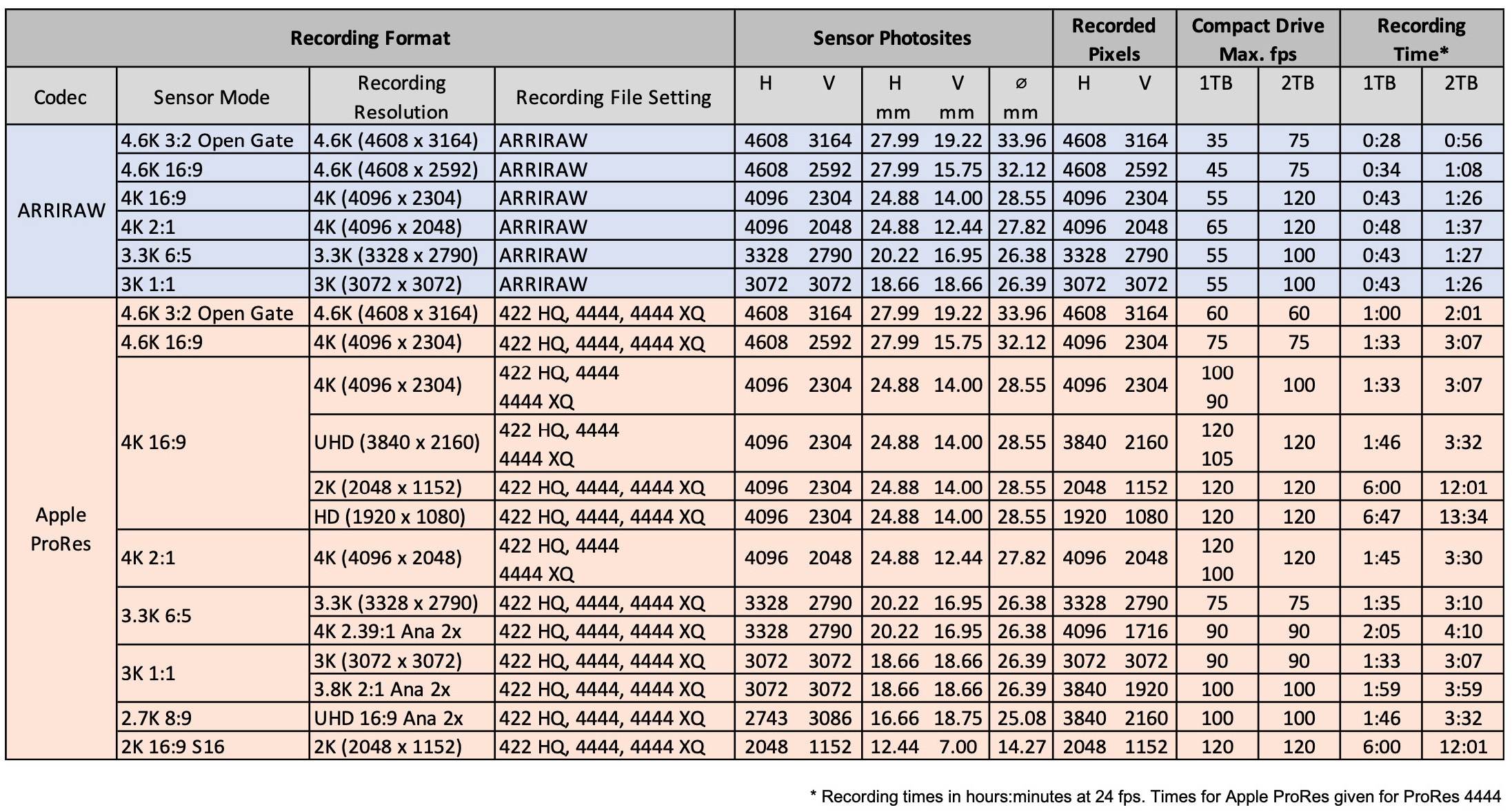
High(er) Dynamic Range
The new sensor boasts an impressive 17 stops of dynamic range, with both the shadows and highlights receiving additional latitude (2.5 stops more overall than preceding ALEXA ALEVIII sensors). The additional dynamic range actually increased the camera’s sensitivity to stray light – non-image forming light bouncing around in the cavity between the lens rear and the sensor. ARRI developed techniques for controlling this behavior in both the camera body and new and existing lens mounts. Lens mounts from older cameras, such as AMIRA, ALEXA MINI, and ALEXA MINI LF, can still be used but for maximum contrast (also a big focus by ARRI during the design phase) either of two new PL mounts (one with an LBUS connector and one with a Hirose) are recommended.
While the camera’s base ISO remains characterized as 800, the latitude “splits,” in conjunction with the new LogC4 curve (see section below) now look like this:
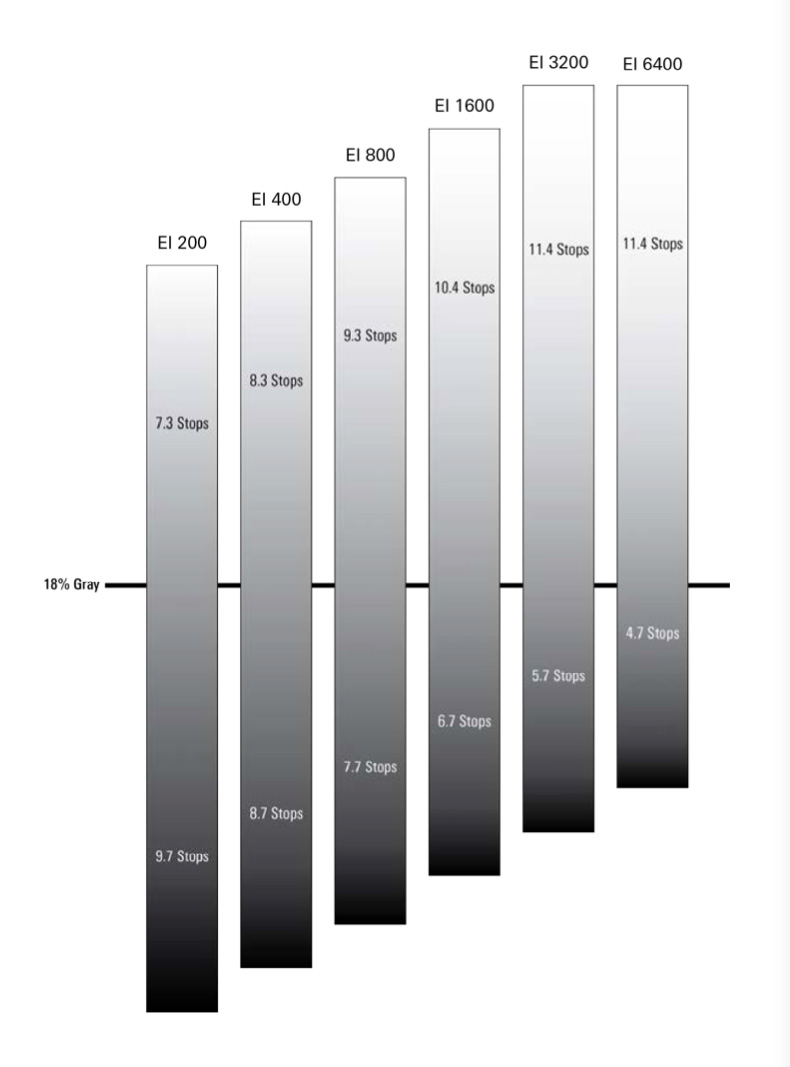
This amounts to an extra 1.5 stops in the highlights and an additional stop in the shadows compared to previous ARRI cameras.
In a first for the company, ARRI is calling out ALEXA 35 as a “high ISO” camera, due to having a lower noise floor than previous cameras. The new camera’s ISO range runs from 160-6400. Optional new special ‘ES’ (Enhanced Sensitivity) modes are available as well, from ISO 2560-6400. These modes reduce noise even further in low-light situations, with the caveat that a 180° shutter angle (or less) must be used and limitations to maximum frame rates:

New REVEAL Color Science
Get ready for a big change (for the better): ALEXA 35’s color science, including in-camera and post-based image processing, native gamut and color space, look file format and even its Log-encoded brightness curve, are all new. Yes, there’s a new version of LogC – LogC4.
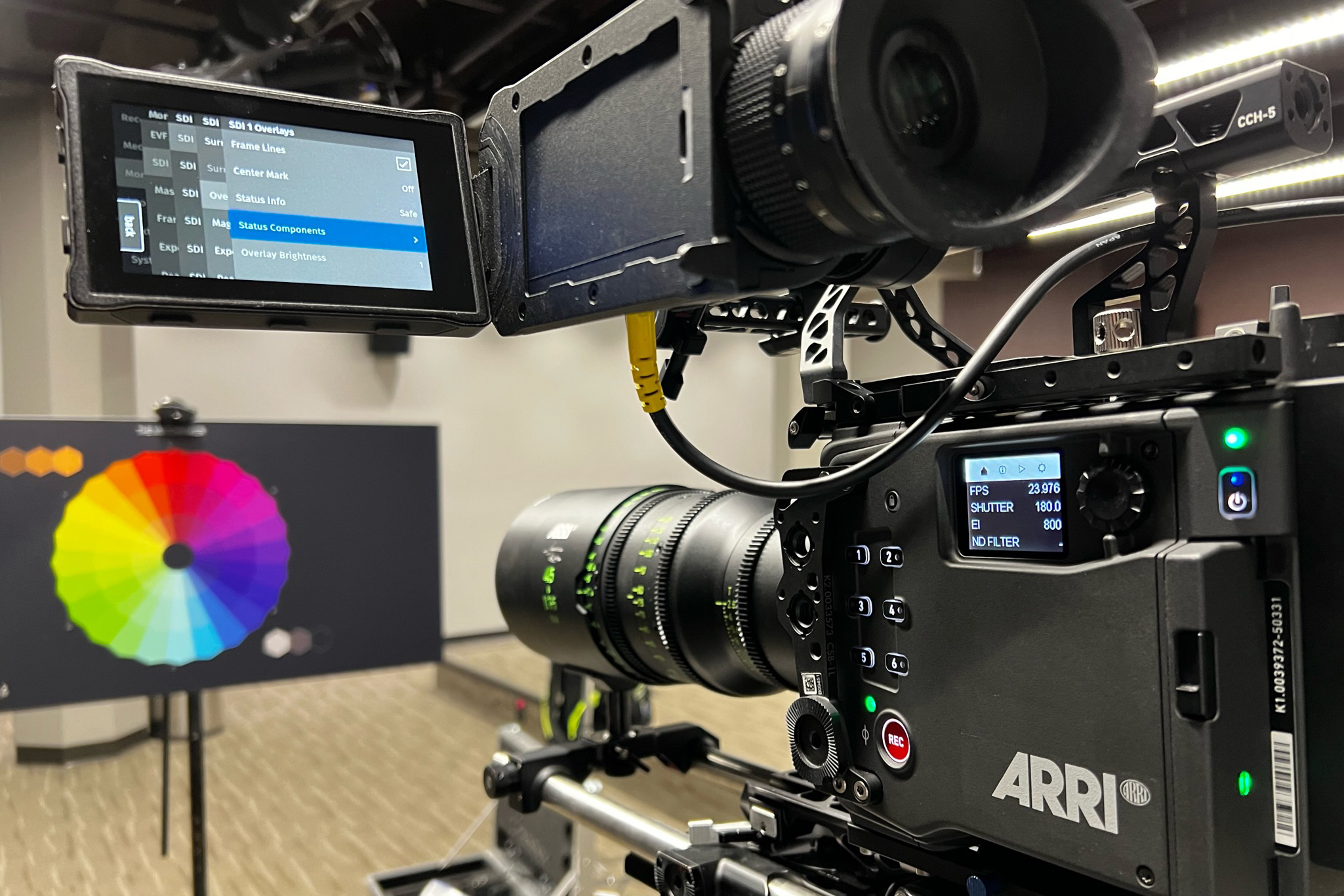
Additionally, there is a completely new image characteristic called Textures that allows DPs to choose from a library of pre-made settings files that modify the camera’s low-level noise signature. This allows for subtle creative choices to be applied prior to de-Bayering, or ‘baked’, in both ARRIRAW and ProRes footage, as part of a project’s creative intent. Different Texture options are best evaluated on a large HDR-capable display or HDR projector. Together, these all-new image processing modules are known as REVEAL.
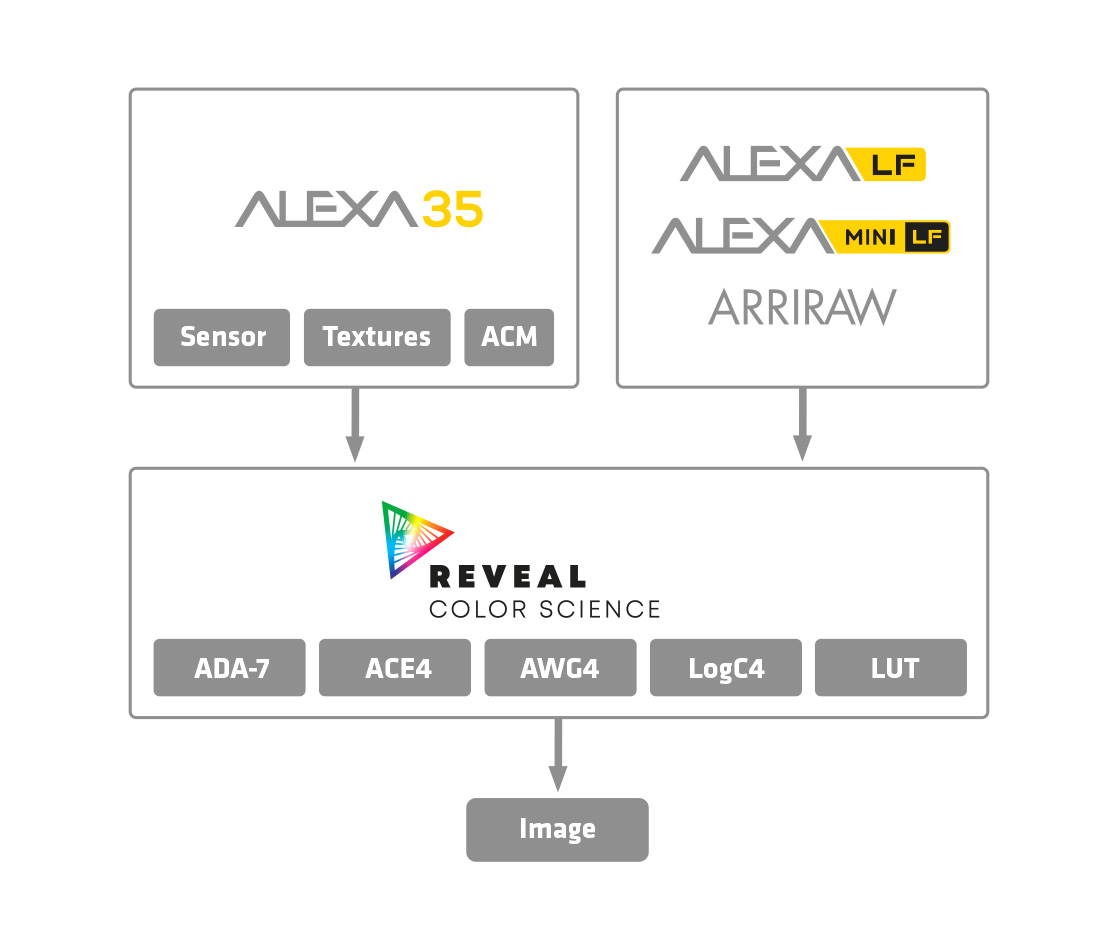
Beginning in-camera with the previously mentioned Textures feature, RAW sensor data is then put through a special color-matching process known as ACM (Advanced Color Match), which should provide as close to identical results as possible among different ALEXA 35 bodies. From there, a new de-Bayer algorithm (ADA-7) brings RAW camera data into image space while providing cleaner and crisper images – especially image edges, which helps when compositing with blue or green screen elements.
After de-Bayering, camera native RGB color values are normalized and converted (by ACE4 – ARRI Color Engine) to a new “right-sized” color space known as ARRI Wide Gamut 4 or AWG4. The new color space is larger than REC2020 but fully contained within the even larger ACES working color space (AP0) to reduce encountering “virtual” (non-visible) colors.
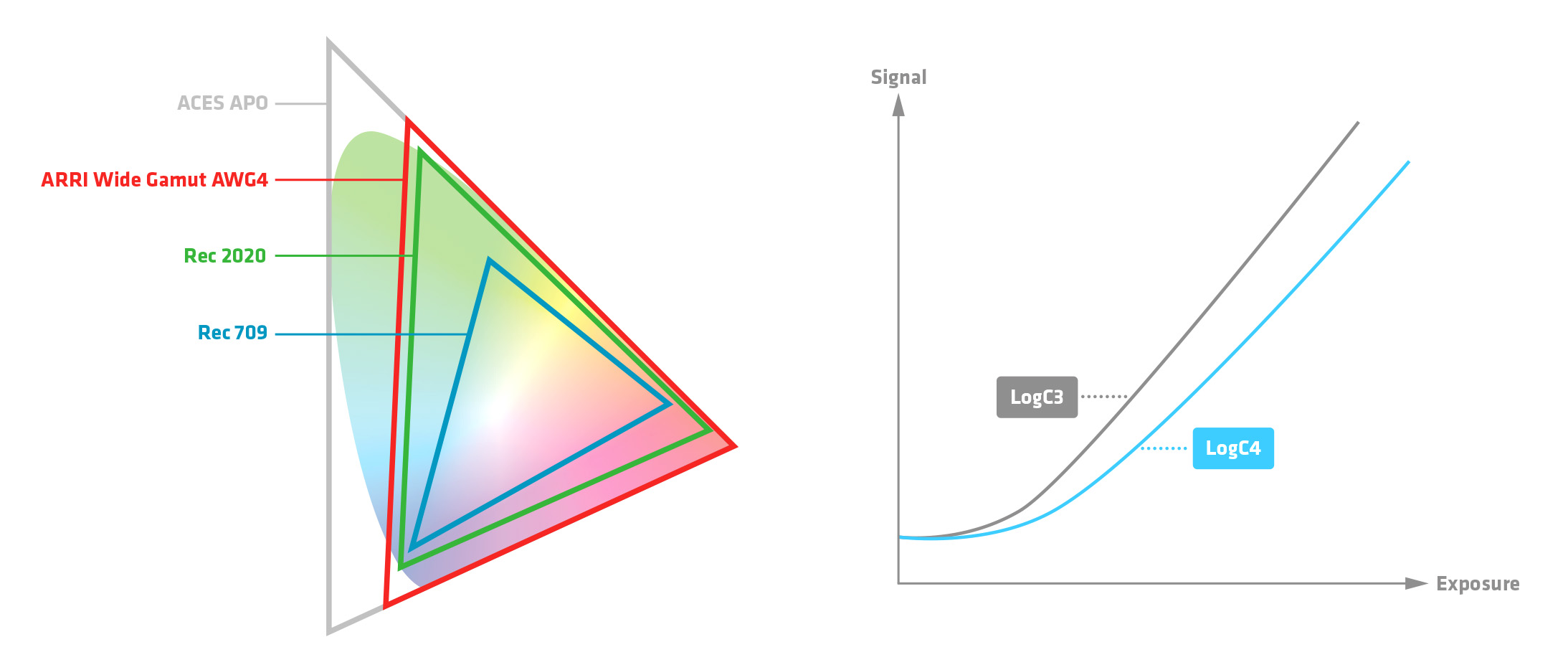
In conjunction with color space conversion, image brightness values are now encoded in a new version of LogC known as LogC4 (the existing standard version of LogC is now known as LogC3). LogC4 was needed to properly handle the increased dynamic range of ALEXA 35 (17 stops) and to accurately map the camera’s long tonal range. LogC4 features a middle gray value of 28% which will result in images that appear darker, when uncorrected, by a stop or more when exposed correctly, compared to LogC3 images which have their middle gray value at 39%. This is by design and would only be observed when viewing uncorrected Log images without a proper display transform applied (such as on a standard REC709 display).
Once the image is transformed to the display’s color space and gamma, all of the image characteristics will be optimized for that display type, and the image will be accurately displayed for a rich, vibrant rendering. We observed more contrast, subjectively better skin tones, enhanced highlight detail and just an overall (we feel) better looking image compared to previous ARRI cameras – which is saying something. And if there was ever a time to stop looking at Log, we think this is it.
Image transforms will initially be handled by new LogC4 3D LUTs provided by ARRI in a number of different formats and destination color spaces, as well as an ACES IDT (input device transform) for the new camera and color science. Select LUTs will be available in-camera and more for download from the ARRI website. Note that, in a post-capture environment such as an editing or color grading application, it would be possible to apply LogC3 LUTs or other transforms to the new footage. However, the two Log curves are not either backwards- or forwards-compatible so don’t expect usable results with ALEXA 35 footage without a proper LogC4 LUT/transform.
Prior to the application of a display transform on the ALEXA 35 – such as setting SDI 1 to REC709 and SDI 2 to REC2100 PQ HDR for simultaneous viewing of SDR and HDR on set, as mentioned previously – a new “slot” for creative-oriented looks is available in the camera. Called ALF4 (ARRI Look File 4), the new look file format is designed to both receive and output a LogC4 image, a so-called “Log-to-Log” transform. Since creative look application happens prior to the display, or output, transform, it operates on the pristine, wide latitude, wide color gamut LogC4 data without rendering into a display space.
In the previous ALF look file format, the creative look and display transform were combined, essentially baking or marrying the creative look with a display-referred rendering. This new approach enables a fully color managed workflow to begin arguably where it should: in-camera. ARRI’s existing Look Library has been converted to the new format and is available in the ALEXA 35 free of charge. To apply looks made outside of the camera, this format can encapsulate either a 3D LUT or an ASC CDL – provided they operate on LogC4 data without introducing a conversion to REC709 or another display/output space.
ARRIRAW footage from the ALEXA LF and ALEXA MINI LF will also be able to be processed – in post – through the new REVEAL color pipeline (aside from features specific to ALEXA 35 like Textures and ACM). REVEAL support is either in late-beta or in-progress for most major editing, color grading, VFX and finishing environments such as Nuke, Avid, Baselight, DaVinci Resolve, Colorfront, Adobe’s Creative Suite, etc.
ARRI has their own all-new, comprehensive tool available as a free download called ARRI Reference Tool (or ART). ART combines all of the features of the existing ARRIRAW Converter, ARRI Color Tool, and ARRI Meta Extract into a central all-in-one environment for browsing clips, setting looks and transcoding.

A new, unified remote control application, ARRI’s Camera Companion app, is available as well. The app provides remote control and configuration, control of multiple cameras and a highly customizable user interface. The app supports Apple’s iPhone, iPad (with iOS/iPadOS 15.0 or later) and Apple’s M1-based Macs (running Mac OS 12.0 Monterey or later). Designed for use in mixed environments, the app can control not only the new ALEXA 35 but also ALEXA MINI LF, ALEXA MINI and AMIRA cameras.
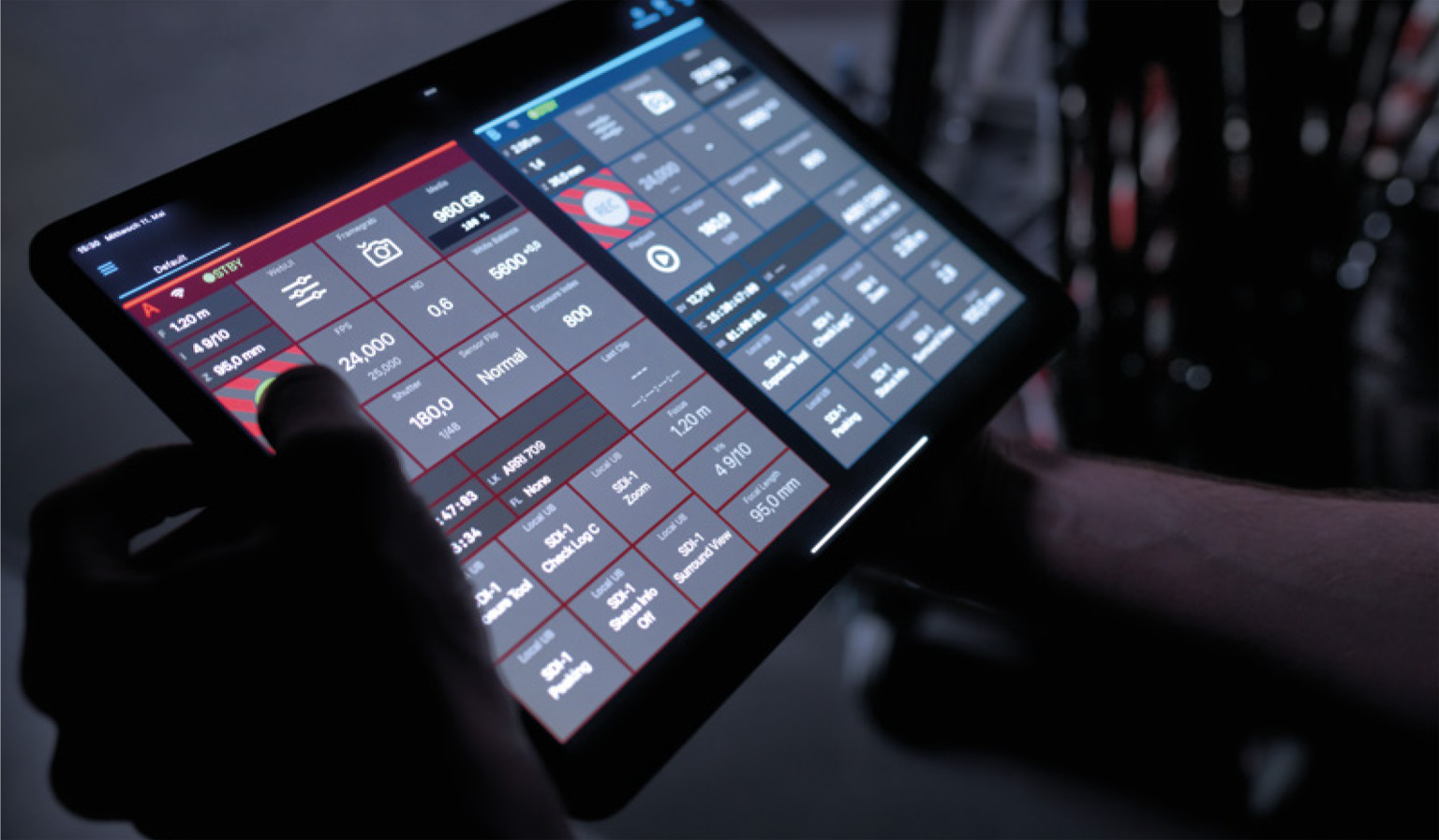
Other ALEXA 35 Highlights
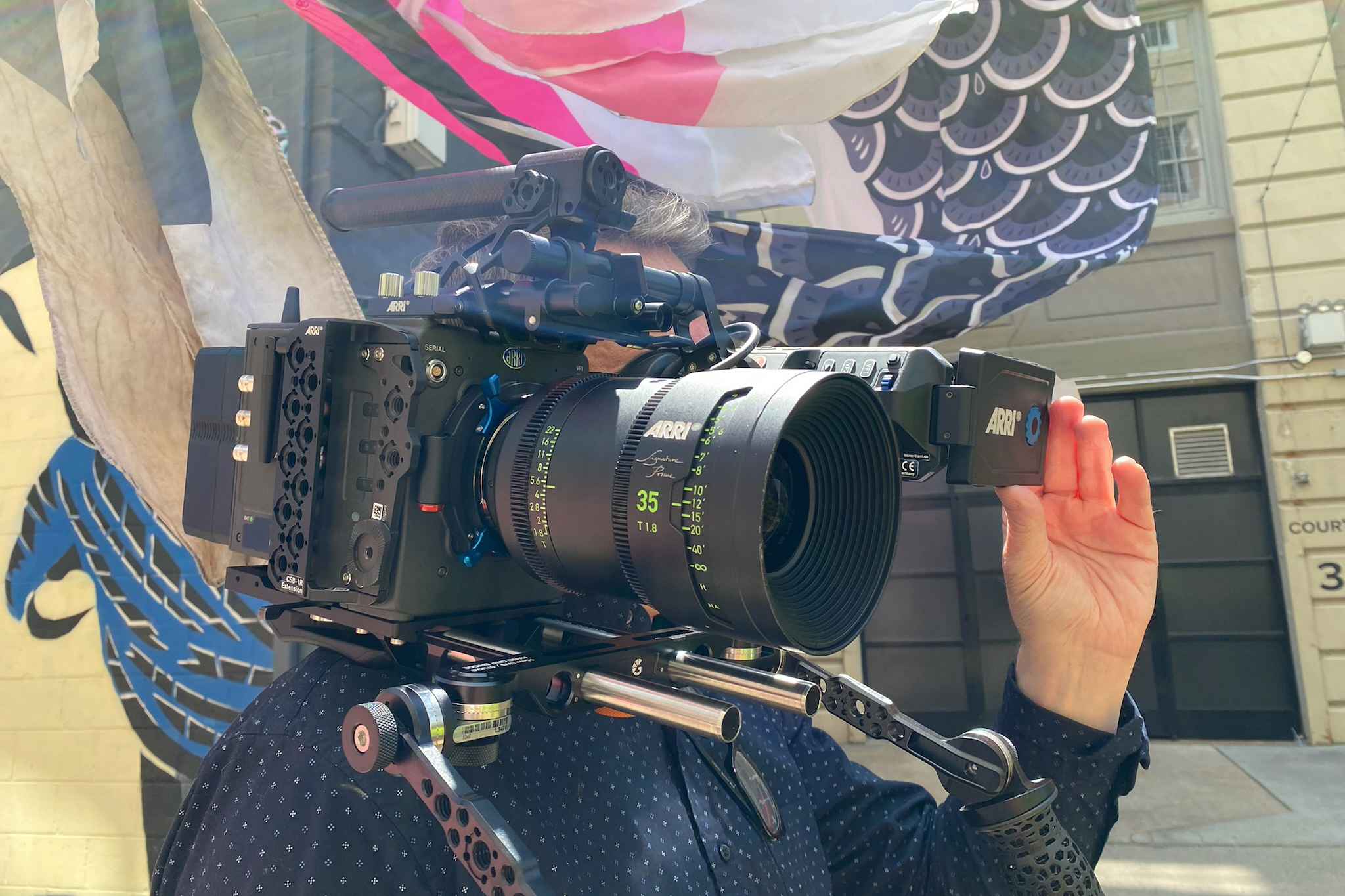
We’ll be producing dedicated content on the rich ecosystem of ARRI Professional Camera Accessories developed for the ALEXA 35, as well as other important aspects of the new camera system. In the meantime, here is a condensed list of other features and important information to review before placing an order.
- ALEXA 35 uses the existing MVF-2 viewfinder which debuted with the ALEXA MINI LF. Due to the processing power of the Alexa 35, a new HDR mode can be enabled in the eyepiece with a maximum brightness of 500 nits.
- ALEXA 35 is a 24V camera system. The input voltage range is 20.5V-33.6V. Maximum dissipation is 290W, with up to 140W dedicated to the camera body and MVF-2 viewfinder. 100W and 50W are available to power 24V and 12V accessories respectively.
- For battery power, ALEXA 35 uses the 24V B-Mount, with adapters available to mount directly to the rear of the body. B-Mount batteries are available from Bebob, Blueshape, Core SWX, Hawk-Woods, IDX and others. Adapters are available to support other 24V or 26V systems such as Anton Bauer Gold Mount Plus, Hawk-Woods Reel Power and CORE SWX Helix MAX batteries.
Two accessory kits are available. While some accessories can be shared among some other ARRI cameras (lens mounts and mount adapters, bridge plates, dovetails, etc.) all components that mount to the body are new, including top handles, mounting plates, rod mounts, brackets, etc.
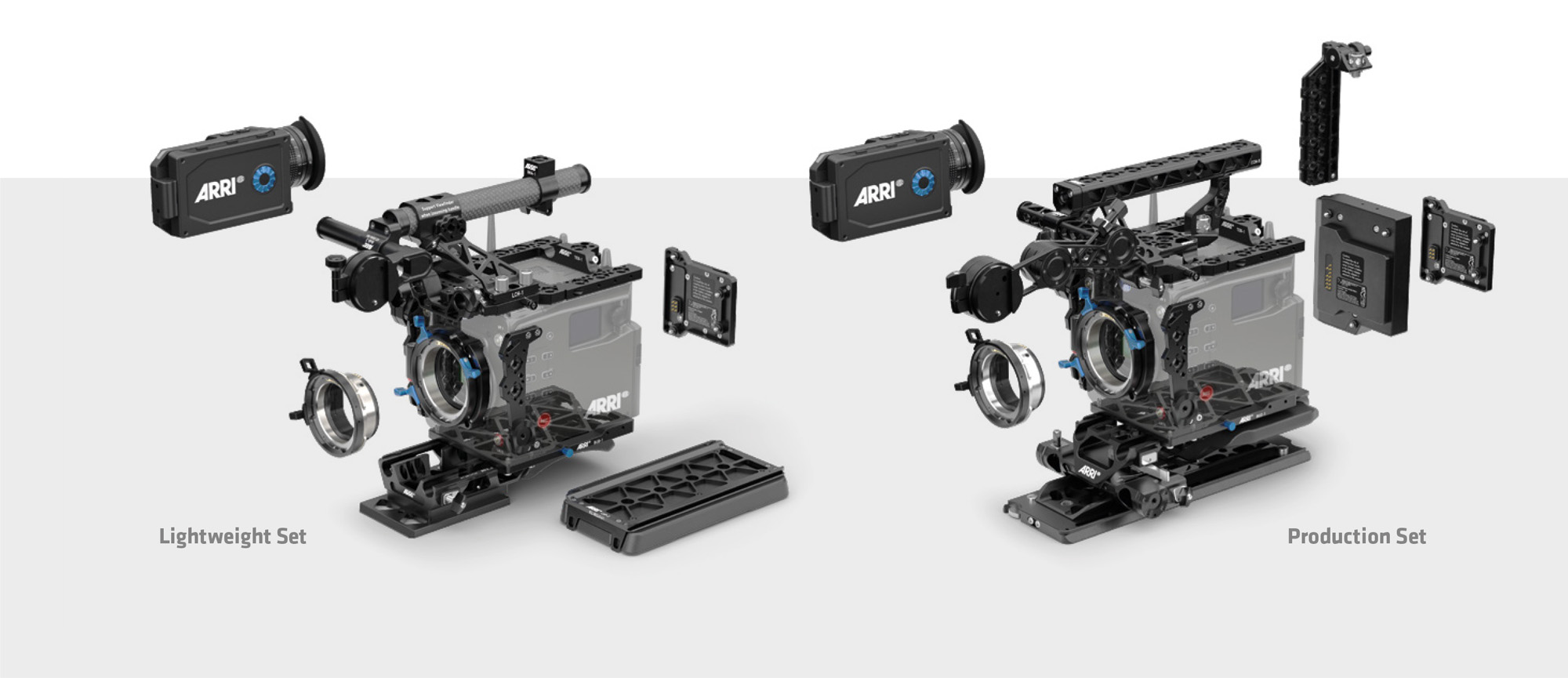
- The Production Set is optimized for larger, more complex camera builds such as for features and streaming episodics. Available in both studio 19mm (which supports 15mm lightweight as well) receivers or 15mm Studio.
- The Lightweight Set is geared for documentary or other “run ’n gun” applications for smaller crews and owner-operators. Supports 15mm lightweight rods.
Two camera-rear modules are available, the Power Distribution Module (PDM-1) to add additional accessory power outputs and distribution, and an Audio Extension Module (AEM-1). Both modules are internally powered and require no cables or extra brackets. Each module also duplicates the battery plate receiver interface on the rear of the camera.
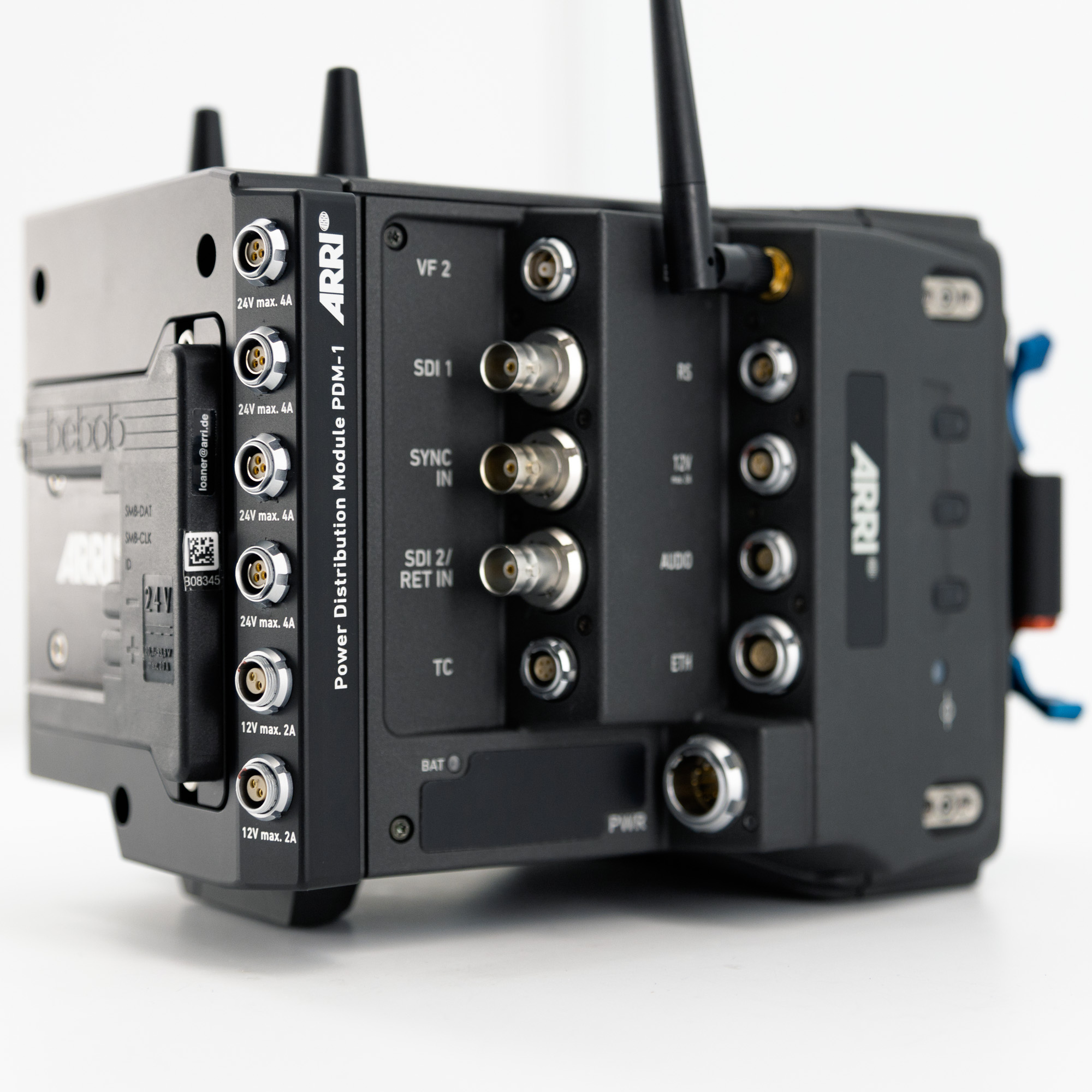
- The Power Distribution Module (PDM-1) provides 4x regulated 24V power outputs (each with 4A max. current draw and confirmed to pass run/stop), 2x regulated 12V outputs (2A) and 1x 12V D-Tap (underneath, also 2A).
- The Audio Extension Module (AEM-1) provides 2x Mini-XLR for analog MIC/LINE in (with optional 48V Phantom power), 1x Mini-XLR for AES stereo digital audio in, a 3.5mm stereo headphone output, one regulated 12V/2A accessory power output and one regulated 24V/4A output. The AEM-1 is produced by Swiss pro audio company Sonosax and features audio dynamic range of 129dB(MIC) and 135dB(LINE) and total harmonic distortion of <0.001%.
In the brief time we had with the ALEXA 35 we found a lot to like about it out of the gate. As we get more familiar with the new system we’ll have more to say about the features summarized above, and others, and in more depth, so stay tuned for more on this exciting development – one that looks poised, in the near term, to dominate the conversation at the high end of digital cinema.
For pricing and configurations, contact our sales team through our ALEXA 35 page. Orders are being accepted starting June 1, 2022. Additionally, all customers who order an ALEXA 35 through AbelCine will receive two seats in our ALEXA 35 Quick Start class at no charge upon delivery of their camera.















AbelCine encourages comments on our blog posts, as long as they are relevant and respectful in tone. To further professional dialog, we strongly encourage the use of real names. We reserve the right to remove any comments that violate our comment policy.
AbelCine publishes this blog as a free educational resource, and anyone may read the discussions posted here. However, if you want to join the conversation, please log in or register on our site.
We use Disqus to manage comments on this blog. If you already have a Disqus account registered under the same email as your AbelCine account, you will automatically be logged in when you sign in to our site. If not, please create a free account with Disqus using the same email as your AbelCine account.